Studio Horror

Recommended for you
The 1970's saw a return of the big budget studio Horror film as well as a boom of independent Horror films making a huge impact on mainstream culture. Horror films were being taken seriously in the 70's thanks to a famous late 60's film Rosemary's Baby. Thanks to this film having mainstream appeal, critical acclaim, and a highly regarded director (Roman Polanski) and lead actress (Mia Farrow), studio films like The Exorcist in 
Films like The Exorcist, Jaws, and Alien are now among lists of greatest films ever made and spawned franchises – unfortunately with the first two, but not so much the case with Alien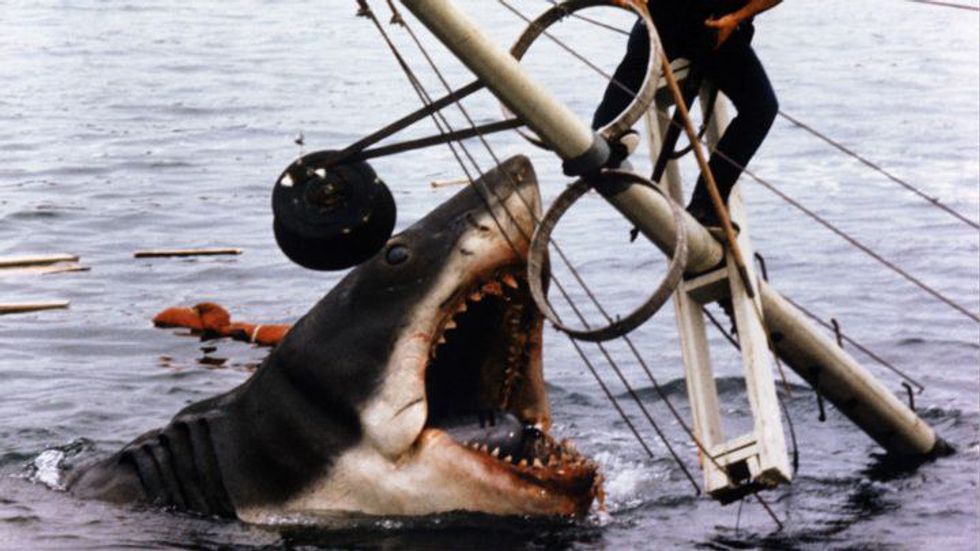
Independent New Wave
Under the surface of the big budget studio films there was an explosion of Independent Horror films made for shoe string budgets with huge box office returns or cult status. These films were very much focused on the inner horror or the fear of those around you instead of a monster or a 
1974 saw some of the first Slasher prototype films with Tobe Hooper's The Texas Chainsaw Massacre and Bob Clark's Black Christmas. While neither of these films relied on heavy gore, the 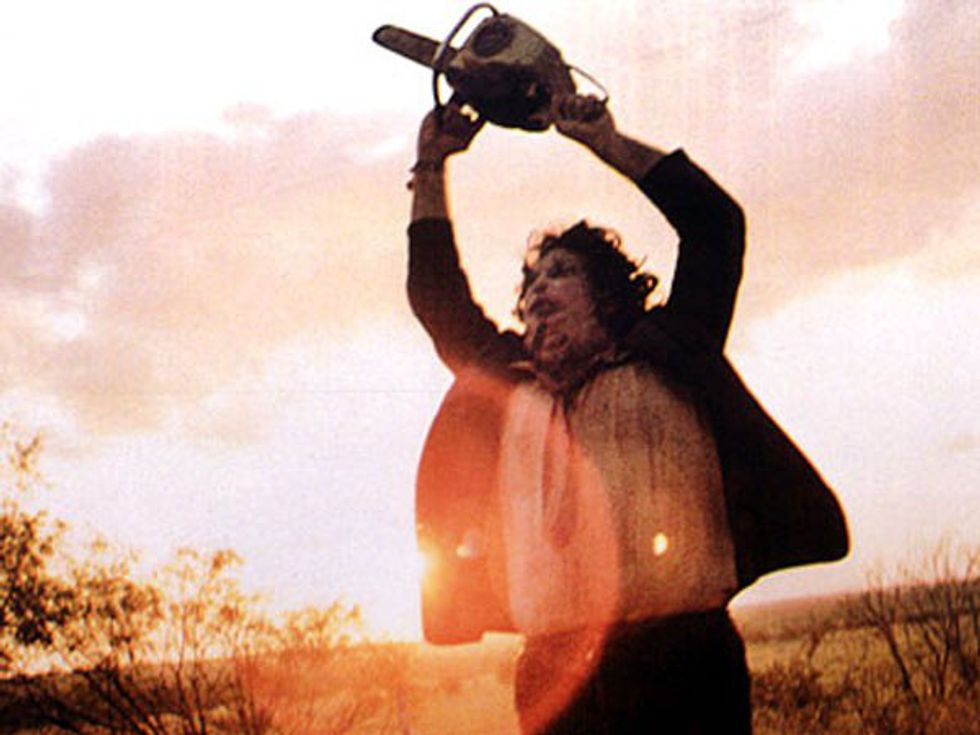
Two of the most important American independent Horror films in the 70's were John Carpenter's 1978 film Halloween and George A. Romero's 1979 film Dawn of the Dead. Both highly influential, highly regarded, and successful financially. Halloween, for many years, was one the highest grossing independent films made; with a budget of $300,000 and grossing $70 million. The film went on to influence the Slasher genre in the 1980's by providing the tropes of the silent and slow
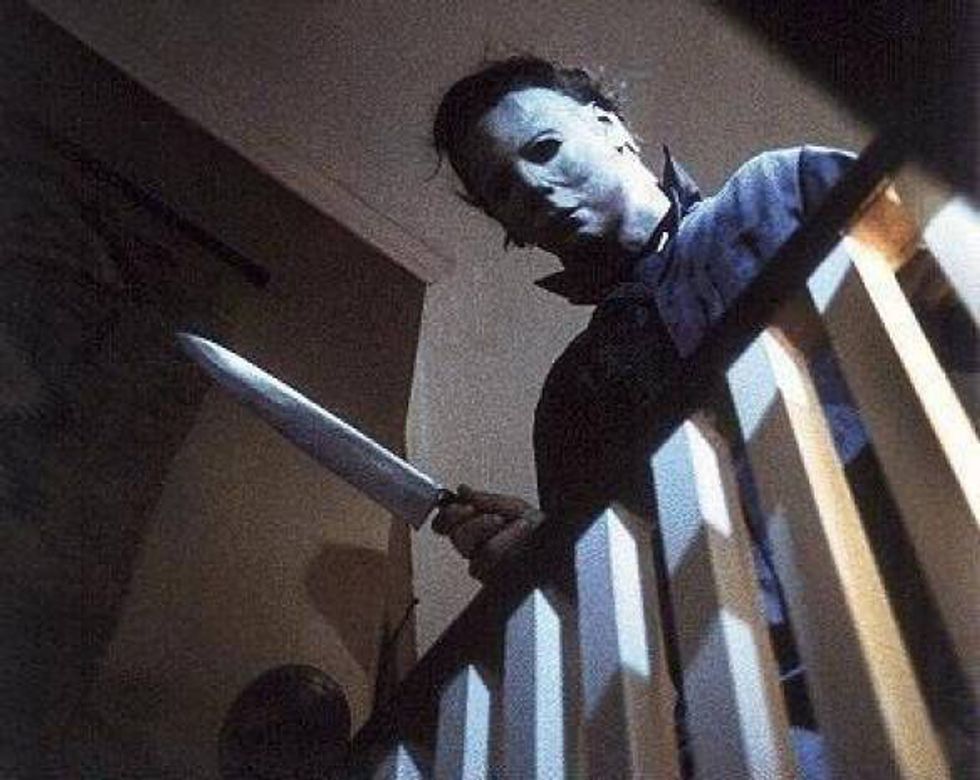
Dawn of the Dead is the sequel to Romero's debut film Night of the Living Dead and unlike many gore staples of Horror, Dawn received initial critical acclaim upon release instead of over time. The film carries itself with social commentary on consumerism (being set mostly in a mall) and modern society at the time, while also not taking itself too seriously having a sense of humor. The
film features makeup and practical effects from the legendary Tom Savini– who also appears in the movie as the leader of the biker gang that attacks the mall. Most people consider it to be the best of Romero's Dead films or the best zombie film in general. The film was released internationally, which helped its financial success, thanks to the help of Italian filmmaker Dario Argento who collaborated with Romero on the international cuts of the film (retitled as Zombi) as well as financing for the budget. The film was made with $1.5 million and grossed $55 million and spawned many sequels from Romero himself as well as an unauthorized sequel in Italy directed by Lucio Fulci, titled Zombi 2.
Italian Horror
Italian Horror is widely regarded as some of the best in the genre with filmmakers such as Dario Argento, Mario Bava, Umberto Lenzi, and Lucio Fulci churning out classics from the mid 60's to the late 80's. Italian Horror is usually characterized by a very distinct cinematography, stylized violence and surreal music. Italian Horror is pretty broad in nature ranging from Gothic tales to serial killers to zombies to cannibals. It is incredibly important to note is the Italian creation of the “Giallo film.” Giallo is a genre of literature and film that contains elements of mystery with slasher, supernatural horror and/or crime fiction elements. Giallo films are a genre worthy of an entire book there are so many made in the 60's, 70's and 80's with some small pocket resurgence in modern times.

Among the most famous Italian Horror directors the two most influential are Dario Argento and Mario Bava. Both are acclaimed and have brought classic films the the Horror universe. Bava is usually credited as the “Godfather of Italian Horror” with films like Black Sunday in 1960, Black Sabbath (which inspired the famous Heavy/Doom Metal band) in 1963, and the giallo film Blood and Black Lace in 1964. Bava thrived in the early 70's with films like Hatchet For the Honeymoon in 1970, Bay of Blood in 1971, and Baron Blood in 1972 but was disheartened by his increasing decline in critical favor and financial success. Bava died of heart failure in 1980 sadly ending his career.
Mario Bava paved the way for the legendary Dario Argento to transition from his early work as a screenwriter, most famously on Sergio Leone's masterpiece Spaghetti Western Once Upon a 
Aside from the big two, other Italian directors and films made a large impact on the genre such as the unofficial sequel to Dawn of the Dead titled Zombi 2 directed by the “Godfather of Gore” Lucio Fulci who also brought Don't Torture a Duckling (1972), The Black Cat (1981), The Beyond (1981), The House By the Cemetery (1981), and The New York Ripper (1982). Also worth noting are the films Torso (1973), Beyond the Darkness (1979), Black Belly of the Tarantula (1971), and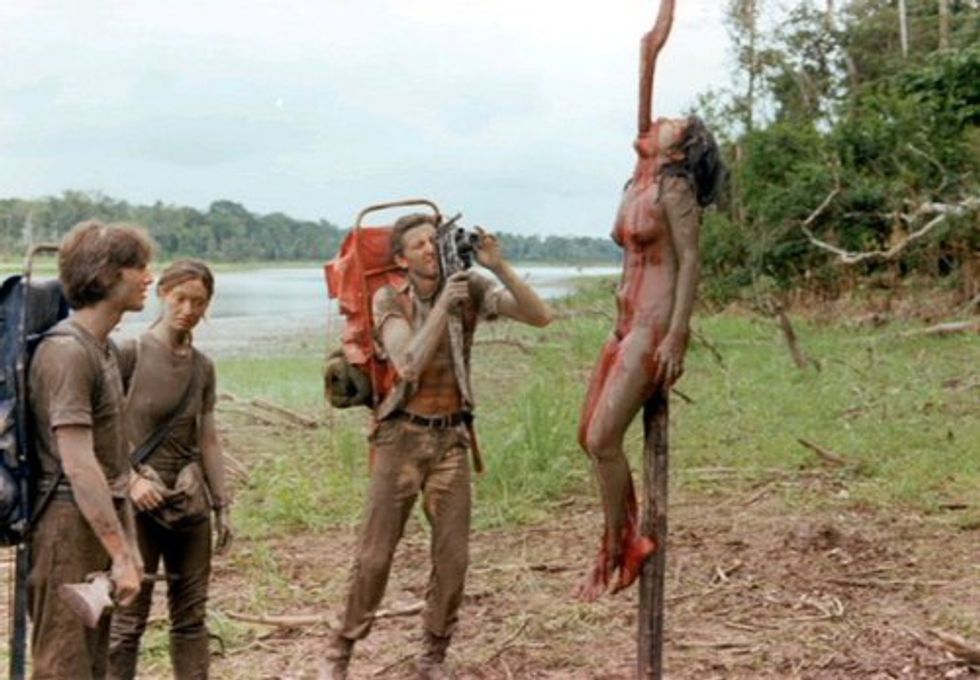
International Horror
UK
Not only was the United States and Italy churning out high quality Horror films, countries all over the world were throwing their hats in the ring. In the UK the Hammer Horror series was still going strong with Taste the Blood of Dracula (1970), Scars of Dracula (1970), The Horror of Frankenstein (1971), Lust For a Vampire (1971), Dracula AD 1972 (1972), Blood From the 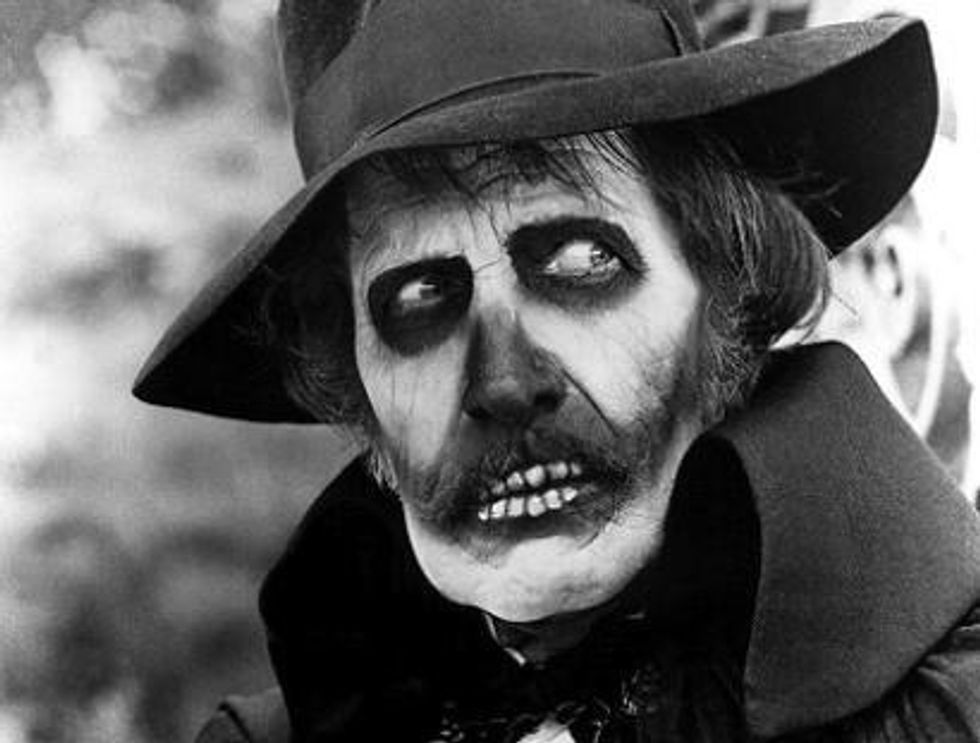
Other European Horror
Germany hadn't been prolific in the world of Horror since the German Expressionist era - the 70's wasn't much different, but there are a few noteworthy films produced at the time. The films mainly stuck to the old style of Horror with Gothic stories and supernatural elements like vampires and witches. Mark of the Devil - German title Hexen bis aufs Blut gequält (1970) features Udo Kier as an apprentice witch hunter to Herbert Lom in a story that contains themes of religious struggle, corruption, and violence. The most prominent and well known German produced Horror film is the
Werner Herzog directed 1979 remake of Nosferatu (titled Nosferatu the Vampyre). The film features legendary German actors Kinski as Count Dracula and Bruno Ganz as Jonathan Harker. Herzog, who loved the original film, wanted to keep what made the original a classic but explore the vampire's loneliness and sense of isolation due to his condition. The film received critical acclaim and had a fair amount of financial success for essentially being an art house film.France never was prominent in Horror until the French New Wave of Extremity, but in the 70's there were a few films worth mentioning such as Roman Polanski's The Tenant (1976) - a psychological thriller dealing with themes of doomed cycles, loss of self, social assimilation, and repression with Polanski starring in the main role of Trelkovsky. The Tenant is the third and final film in Polanski's "apartment trilogy" which features Repulsion (1965), Rosemary's Baby (1968), and The Tenant (1976). Another film that's often over-looked is 1971's Don't Deliver Us From Evil which is loosely based on Parker-Hulme murder case in 1954 dealing with satanic and rebellious
themes. Jean Rollin was a French Horror director worth talking about who made seven Horror films in the 70's. His films, while not always highly regarded, are noteworthy for their use of style and erotic nature. He directed two vampire films in the 1970's in the form of Requiem For a Vampire (Requiem pour un Vampire) in 1971 and The Shiver of the Vampires (Le Frisson des Vampires) in 1971 as well. He made a few other films such as The Iron Rose (La Rose de Fer) in 1972, Demoniacs (Les Démoniaques) in 1974, Lips of Blood (Lèvres de Sang) in 1975, and The Grapes of Death (Les Raisins de la Mort) in 1978 before directing his most known film - Fascination in 1979. The film follows a cult of sexually inspired women who lure men into their castle to kill them and drink their blood.






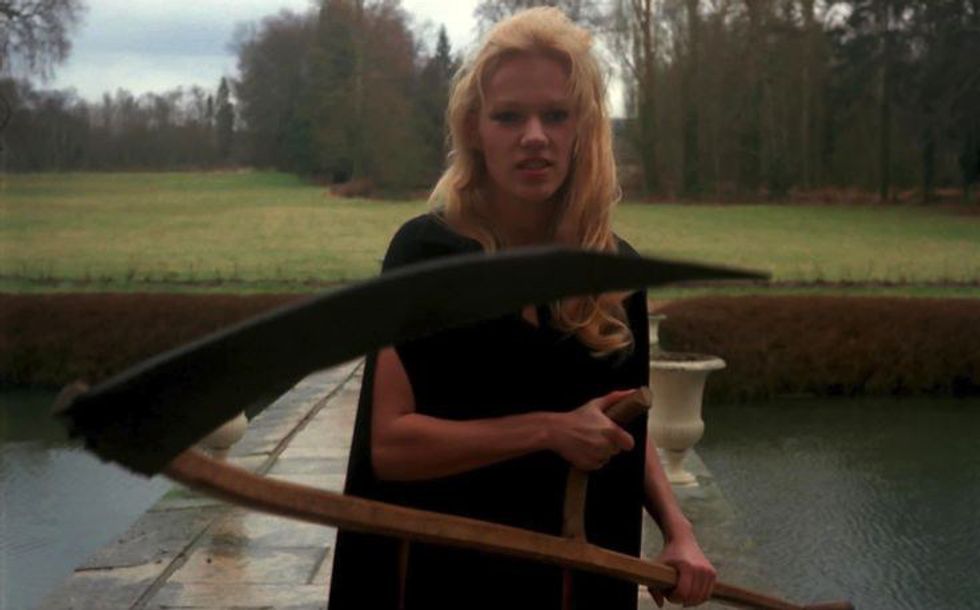


 man running in forestPhoto by
man running in forestPhoto by 





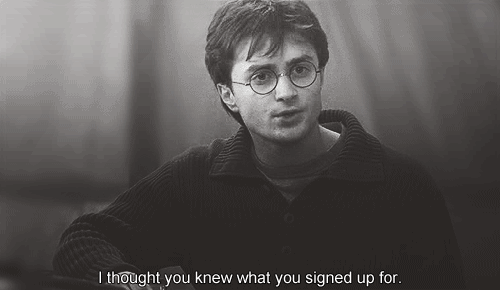 "I thought you knew what you signed up for."
"I thought you knew what you signed up for." man and woman in bathtub
Photo by
man and woman in bathtub
Photo by  four women sitting on black steel bench during daytime
Photo by
four women sitting on black steel bench during daytime
Photo by  Uber app ready to ride on a smartphone.
Photo by
Uber app ready to ride on a smartphone.
Photo by  woman in red tank top and blue denim shorts standing beside woman in black tank top
Photo by
woman in red tank top and blue denim shorts standing beside woman in black tank top
Photo by  blue marker on white printer paper
Photo by
blue marker on white printer paper
Photo by  welcome signage on focus photography
Photo by
welcome signage on focus photography
Photo by  woman in white and black striped long sleeve shirt lying on bed
Photo by
woman in white and black striped long sleeve shirt lying on bed
Photo by  pink pig coin bank on brown wooden table
Photo by
pink pig coin bank on brown wooden table
Photo by  person holding iPhone 6 turned on
Photo by
person holding iPhone 6 turned on
Photo by  person holding pencil near laptop computer
Photo by
person holding pencil near laptop computer
Photo by  person slicing vegetable
Photo by
person slicing vegetable
Photo by 
 woman covering mouth with sweater
Photo by
woman covering mouth with sweater
Photo by  person holding remote pointing at TV
Photo by
person holding remote pointing at TV
Photo by  a woman with her arms raised in a crowd of people
Photo by
a woman with her arms raised in a crowd of people
Photo by  "Shocked disbelief: '95% of the population is undateable?'"
"Shocked disbelief: '95% of the population is undateable?'"







